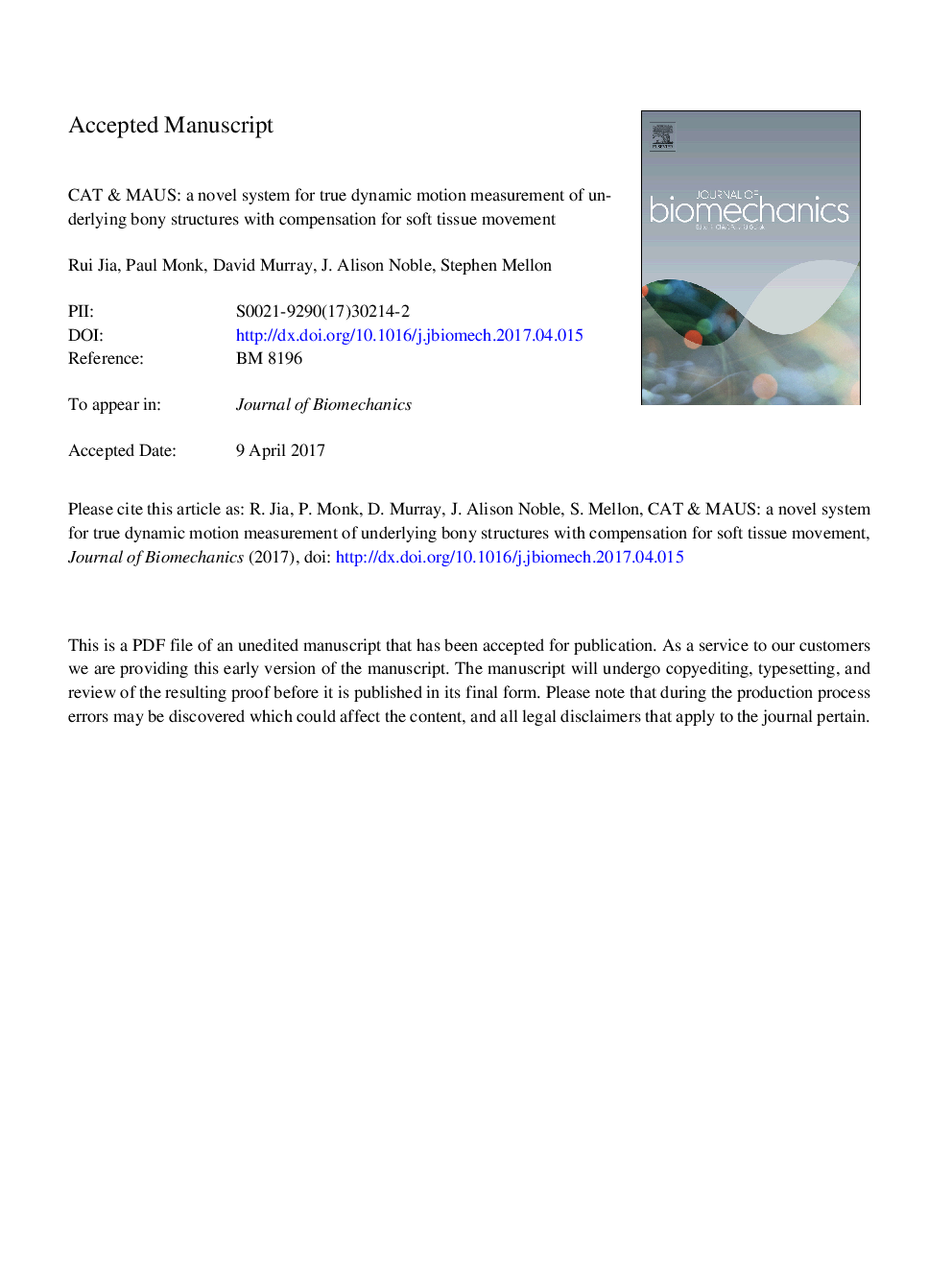| Article ID | Journal | Published Year | Pages | File Type |
|---|---|---|---|---|
| 5031900 | Journal of Biomechanics | 2017 | 30 Pages |
Abstract
Optoelectronic motion capture systems are widely employed to measure the movement of human joints. However, there can be a significant discrepancy between the data obtained by a motion capture system (MCS) and the actual movement of underlying bony structures, which is attributed to soft tissue artefact. In this paper, a computer-aided tracking and motion analysis with ultrasound (CAT & MAUS) system with an augmented globally optimal registration algorithm is presented to dynamically track the underlying bony structure during movement. The augmented registration part of CAT & MAUS was validated with a high system accuracy of 80%. The Euclidean distance between the marker-based bony landmark and the bony landmark tracked by CAT & MAUS was calculated to quantify the measurement error of an MCS caused by soft tissue artefact during movement. The average Euclidean distance between the target bony landmark measured by each of the CAT & MAUS system and the MCS alone varied from 8.32Â mm to 16.87Â mm in gait. This indicates the discrepancy between the MCS measured bony landmark and the actual underlying bony landmark. Moreover, Procrustes analysis was applied to demonstrate that CAT & MAUS reduces the deformation of the body segment shape modeled by markers during motion. The augmented CAT & MAUS system shows its potential to dynamically detect and locate actual underlying bony landmarks, which reduces the MCS measurement error caused by soft tissue artefact during movement.
Related Topics
Physical Sciences and Engineering
Engineering
Biomedical Engineering
Authors
Rui Jia, Paul Monk, David Murray, J. Alison Noble, Stephen Mellon,
